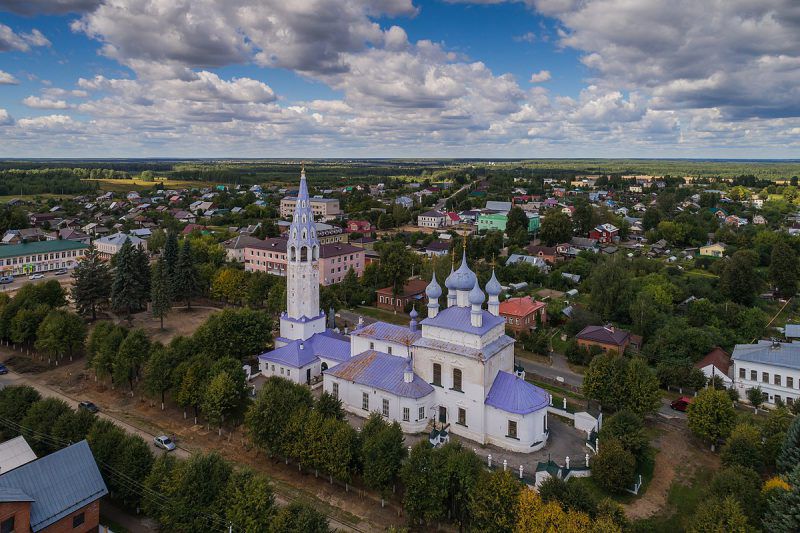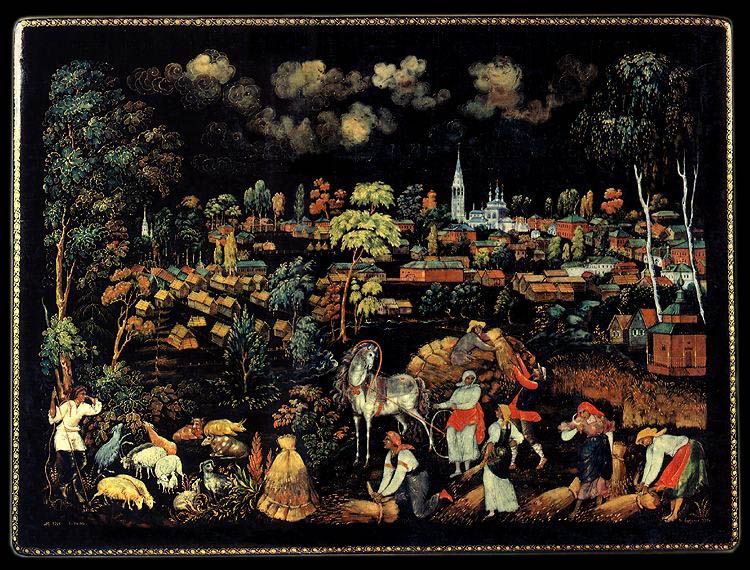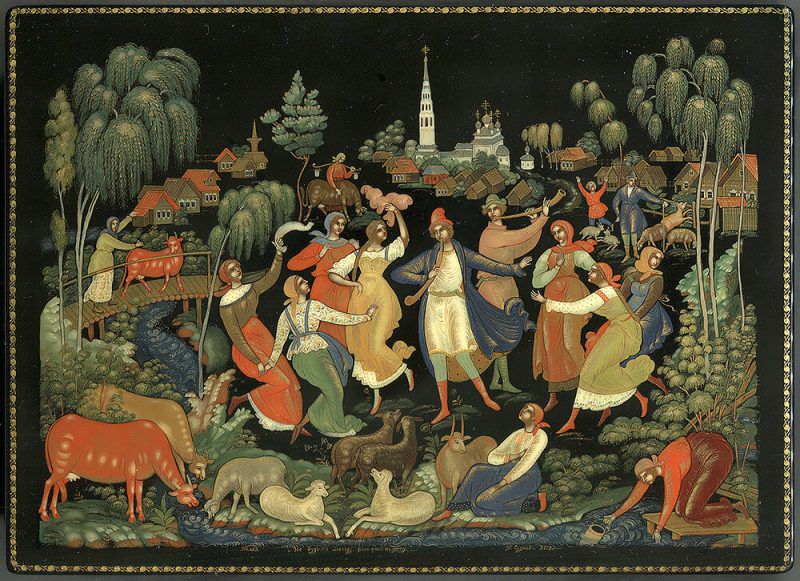Palekh miniature – Russian handicrafts
Russian folk arts always fascinate with their variety of forms, materials and patterns. White and blue Gzhel and bright and festive Khokhloma are known far beyond Russian borders. No less fascinating and interesting is the art of Palekh miniature.

Palekh is the youngest of Russian folk arts that was born in post-revolutionary Russia in 1925. Its appearance was preceded by the centuries-old tradition of icon painting without which the Palekh ornament would not exist.
History of the Palekh miniature
The heart of the craft if located in the village of Palekh, sixty kilometers from Ivanovo. In 16th century, dense forests were growing where the village now is, but the people who came to settle there burnt those forests. These people were later called Palekhchanye. Etymologists have established that this name and the name of the village – Palekh – come from the Russian verb “палить” (to burn).

The village grew and developed, and its inhabitants turned out to be very good in icon painting, embroidery and woodcarving. Rumors and fame about the Palekh craftsmen and their creations quickly spread all over Rus’. During the next few centuries, all the way until the 1917 Revolution, Palekhchanye continued to master their craft of iconography.
After the revolution the church and religion were prohibited by the new Soviet government. The craft was at risk of extinction. But Palekhchanye, that ended up out of work, did not want to lose their centuries-old traditions and tried to create an artel to restore the churches, but this idea, of course, failed. Refusing to accept that their art would be forgotten, they decided to find a new application of their skills and began to paint household items made of wood. The most convenient items for painting were caskets, powder cases, snuffboxes, small boxes of all sorts and plates.

Specifics of production
Two most important distinctions of Palekh miniature from other Russian handicrafts are the detailed and scrupulous drawing of miniature scenes and the use of gold painting and egg tempera. The finished blank for the future masterpiece is covered with three layers of black lacquer (black color symbolizes the darkness of the Earth’s beginning from which the light emerges, and also black more than other colors has an internal depth and volume). After the lacquer dries up, a drawing is applied on top with a thin brush. All items covered with Palekh drawings are made by hand, therefore it is impossible to find two identical ornaments.
The themes of the drawings are usually scenes from Russian fairy tales, legends and epics. Each finished painted object tells a story and captures the viewer by how thin and accurate the depicted objects are, how detailed and elegantly traced the parts of the human body, animals and natural elements are.

Palekh handicraft today
Palekh art flourished in the 20th century during the 60s: workshops were opened in which future masters were trained, exhibitions of finished products were held both in the Soviet Union and abroad. Now interest in Palekh has subsided a bit, but this does not mean that the art of Palekh miniature has been forgotten.
In St. Petersburg, you can appreciate the art of the Palekh miniature in the Russian Museum, in the building of folk arts.

Culturologist, professor of Russian as a foreign language and promoter of Russian culture.
Aleksandra gives Russian lessons via Skype.




